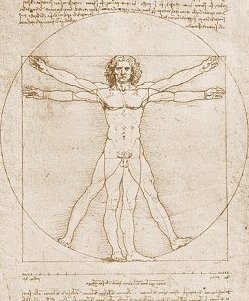Everything transitions from one form to another through stages. In a play, a character may transition from hope, to frustrated ambitions to bitterness and despair. Death itself comes as a transition. Thus, does Leonardo da Vinci describe, in his Notebooks [as quoted by Lajos Egri], the transition to death:
... And this old man, a few hours before his death, told me that he had lived a hundred years, and that he did not feel any bodily ailment other than weakness, and thus, while sitting up on a bed in the hospital of Santa Maria Nuova at Florence, without any movement or sign of anything amiss, he passed away from this life. And I made an autopsy in order to ascertain the cause of so peaceful a death, and found that it proceeded from weakness throgh failure of blood and of the artery that feeds the heart and the other lower members, which I found to be very parched and shrunk and withered, and the result of his autopsy I wrote down very carefully and with great ease, for the body was devoid of either fat or moisture, and these form the chief hindrance to the knowledge of its parts ... The old who enjoy good health die through lack of sustenance. And this is brought about by the passage to the mesaraic veins becoming continually restricted by the thickening of the skin of those veins and the process continues until it affects the capillary veins which are the first to close up altogether; and from this it comes to pass that the old dread the cold more than the young, and that those who are very old have their skin the color of wood or dried chestnut, because this is almost compeltely deprived of sustenance.
What is in this description that makes it such a more revealing read that today's medical treatise on aging and death?

